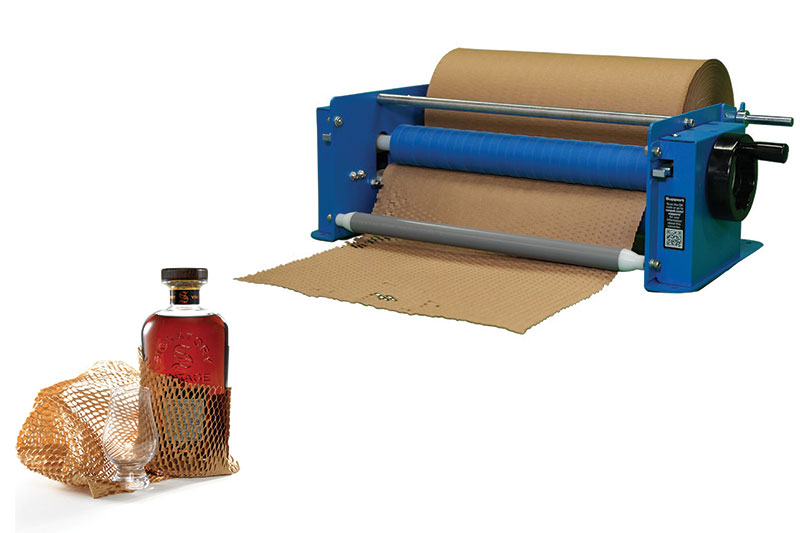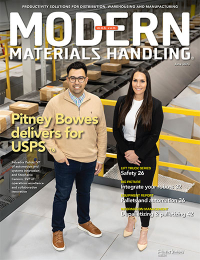Go small or go home with mini, paper based wrapping system
A new, mini, paper-based wrapping system steps up to packaging stations for artisans as well as high-volume e-commerce.

As hard as this may be to believe, automation is not always the right answer for the packaging line in every distribution center. Just consider the artisans in Asheville, N.C., and similar communities who have relied on manual paper packaging for shipments of their creations for some time.
That experience, says Madeline Harvey, product manager, wrapping, at Ranpak Holdings, has actually paved the way for broad use of manual paper packaging systems at high-volume e-commerce operations today.
These companies put a premium not just on protecting an item in transit, but the customer experience when unwrapping the delivered item. For some, that added experience is critical to their brand.
In other words, not everything in packaging is about speed. There’s also an aesthetic to consider. Actually, for Ranpak’s manual Geami wrapping stations there are several aesthetics.
Let’s start with the word itself. From Greek, “G” stands for Gaia, which means earth, and “ami” means friend.
Which sets the stage for this: The new Geami MS Mini wrapping system is described by Harvey as a sustainable, recyclable and plastic-free alternative to traditional bubble pack. Harvey says the new mini is only 15 inches wide, not 20, making it a fit for space-constrained packing stations.
From a roll, the system dispenses and cuts the desired length of die-cut honeycomb paper as the operator pulls the paper forward, manually wrapping the item. Simultaneously, the honeycomb expands and interlocks, providing high-end protection (its own aesthetic).
No adhesive or tape is required to secure the packaging in place. The die cuts simply expand and interlock as the paper is wrapped around the item. Harvey says the protection is sufficient to protect a raw egg from breaking while in transit. That’s impressive.
There’s also the aesthetic of the honeycomb paper design itself. “The design is so intriguing that it adds a new element to the customer experience. That’s a real plus for companies that want to maximize that aspect of the transaction and the brand,” adds Harvey.
Which leads us to the cost aesthetic. Compared to bubble wrap, the honeycomb paper material typically costs 10% more. However, total cost of ownership for the Geami mini system is 10% to 20% less than for bubble wrap, says Harvey.
One key element here is the packaging itself. For instance, says Harvey, one pallet of Geami paper has the equivalent packaging volume as 10 pallets of bubble wrap, significantly reducing warehousing costs. In addition, the Geami equipment requires less space at the packaging station.
Harvey goes on to explain that the time required to wrap an item in Geami paper is typically less than for bubble wrap, saving labor hours. And, as was mentioned earlier, no tape or adhesives are required.
That total cost of ownership of the system and packaging along with outstanding shipment protection are critical to success of Geami stations, says Harvey. “Overall, we have to be as good or better than plastic bubbles or we won’t get very far,” she adds.

Article Topics
Ranpak News & Resources
Go small or go home with mini, paper based wrapping system Using Automation to Scale E-Commerce for the Holiday Season and Beyond It’s time to optimize packaging Caja Robotics and Ranpak partner on packaging solution for order fulfillment One Madison Corporation to combine with Ranpak Ranpak sold to private equity firm Rhone Capital RadioShack makes the little things count with new pick module More RanpakLatest in Materials Handling
ASME Foundation wins grant for technical workforce development The (Not So) Secret Weapons: How Key Cabinets and Asset Management Lockers Are Changing Supply Chain Operations MODEX C-Suite Interview with Harold Vanasse: The perfect blend of automation and sustainability Consultant and industry leader John M. Hill passes on at age 86 Registration open for Pack Expo International 2024 Walmart chooses Swisslog AS/RS and software for third milk processing facility NetLogistik partners with Vuzix subsidiary Moviynt to offer mobility solutions for warehouses More Materials HandlingAbout the Author
Subscribe to Materials Handling Magazine

Find out what the world's most innovative companies are doing to improve productivity in their plants and distribution centers.
Start your FREE subscription today.
April 2024 Modern Materials Handling

Latest Resources











